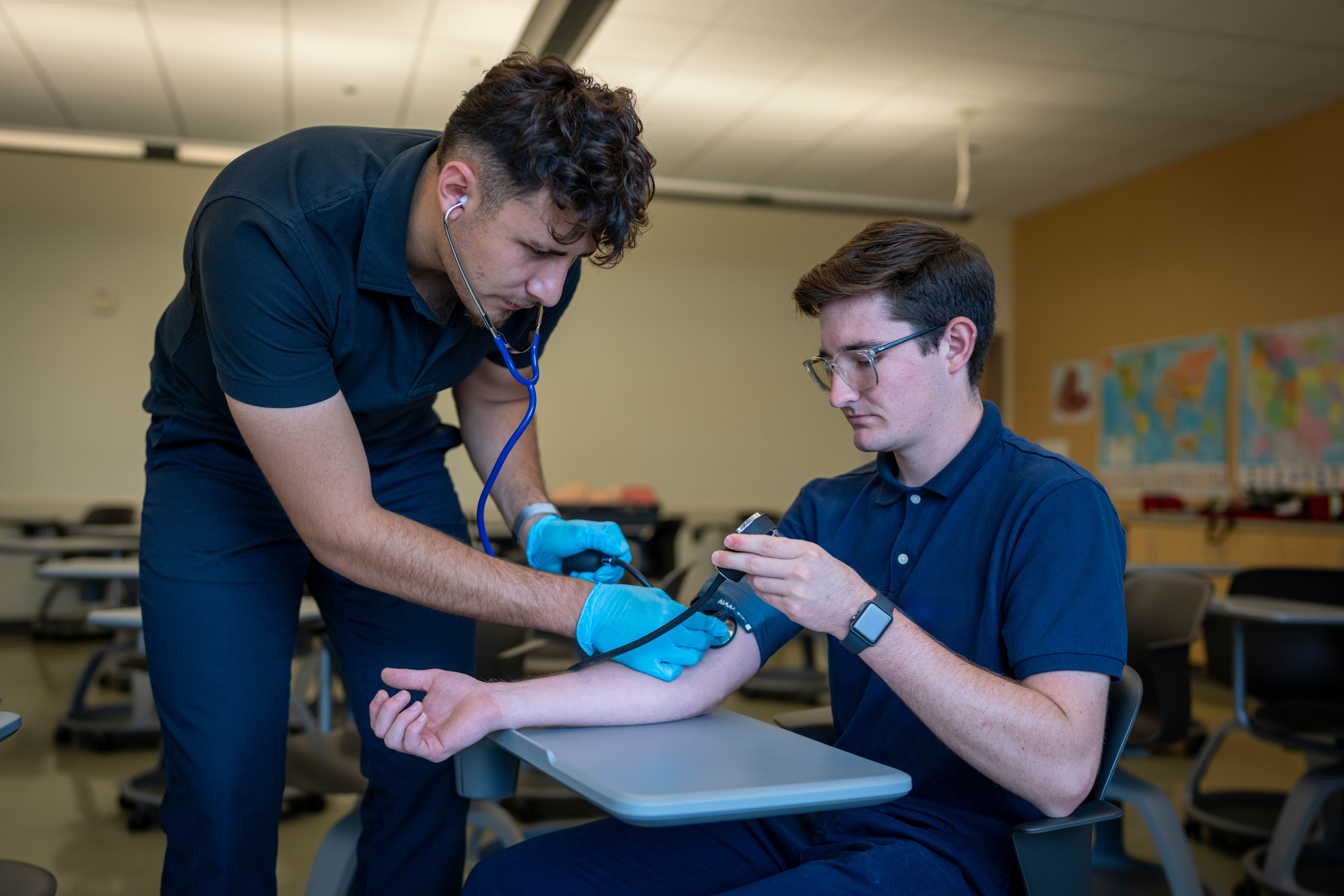
EMC 100
The Emergency Medical Responder (EMR) course is an entry-level class for individuals who want to learn how to care for ill and injured individuals, either on the job or in the public setting. This 65 hour course meets one time per week for 3 hours. It is a full semester course that combines lecture material with skills/scenario practice. Students learn how to handle medical emergencies during the first few minutes prior to advanced care arriving on scene. EMR is an excellent introduction for those who are considering a career in the EMS field.
SRJC EMC 100
Dress Code and Grooming Standards
Shirts - Shirts are solid dark navy in color in a button down or polo style. Shirts may not have any logos or printing. Shirts are not frayed, discolored, or torn. Shirts must stay always tucked in.
Pants - Pants are solid dark navy in color. Pants are clean and correctly fitted for length. Shirts are not frayed, discolored, or torn. Pants are worn at the waist and secured with a black belt.
Belt – The belt is black in color, 1” to 2½” wide, with a plain silver buckle.
Shoes/Boots - Footwear must be black in color and are neat and clean. All footwear must consist of sturdy soles and be closed toed. Athletic footwear is not permitted.
Hat (Optional) – Hats are to be standard baseball style, navy in color or with nylon mesh back. No logos permitted other than the PSTC logo. Hats may not be worn indoors. No other style headwear shall be worn.
Outerwear - Jackets or pullovers must be solid dark in color and may not have logos or printing. Hooded sweatshirts are not allowed.
Equipment – Wristwatch capable of tracking seconds (digital or sweep hand).
GROOMING
Hair – Hair should be clean and presentable. Hair below shoulder length will be confined so as not to fall forward over the face or otherwise endanger the student while working.
Facial Hair - Neatly trimmed and groomed mustaches, beards and goatees are acceptable.
Jewelry - Jewelry which may pose a safety issue to the wearer or other people must be removed during practical exercises. Holes in gauged ears that can create a safety hazard must be filled with appropriate flesh-colored plugs during practical activities.
Makeup - Make-up shall be kept subdued and at a minimum. Avoid the use of fragrance as it may pose an allergy hazard to others.
Hygiene - All students are required to maintain proper personal hygiene. Fingernails should be kept short, neat and trimmed at all times. Dirty fingernails, bad breath, body odor, dirty or unkempt hair, unshaven or poorly shaven faces are all conditions that do not meet program standards.
Tattoos - Visible tattoos must not be offensive or derogatory of others.
COMPLIANCE
Students who do not comply with the above standards will receive a written notice upon the first violation. Second and subsequent violations shall result in dismissal from class that session. Attendance hours lost because of dismissals shall apply to the maximum 6 hours allowed.